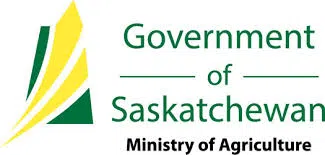East-Central Saskatchewan
Many parts of the east-central received modest rainfall that will benefit crop development. Despite delays from rain and wind over the past few weeks, producers have nearly completed in-crop weed control and are now starting to apply fungicides as needed. Many livestock producers have started to cut hay, although some are still in the preparation stage.
The Saskatoon and Foam Lake areas got the most rain with 46 mm and 45 mm, respectively. The Hanley area followed with 37 mm, while the Arbury area got 30 mm. There were many other areas in this region to get the timely rain.
Topsoil moisture slightly decreased last week, but overall levels remain sufficient for crop growth. Cropland topsoil moisture this week is three per cent surplus, 71 per cent adequate, 23 per cent short, and three per cent very short. Hayland topsoil moisture is three per cent surplus, 64 per cent adequate, 20 per cent short, and 13 per cent very short. Pasture topsoil moisture is currently rated at three per cent surplus, 62 per cent adequate, 21 per cent short, and 14 per cent very short.
Producers are noting that crop development for spring cereal, oilseed, and pulse crops are uneven due to the patchy crop emergence earlier this year. Spring cereals are the furthest ahead of normal stages at 12 per cent ahead. Forty per cent of annual forage crops are behind normal development stages which makes them the furthest behind of any crop type, but oilseeds are slow to develop with 21 per cent of these are behind normal growth stages. Overall, growing conditions are currently good for most crop types.
Haying progress in the east-central is slightly behind the provincial average. Currently, 90 per cent of hay crops are still standing, eight per cent have been cut, and two per cent have been baled or silaged. Hay quality in this region is above average compared to the rest of the province. Of the hay that has been cut, 12 per cent is excellent, 49 per cent is good, 27 per cent is fair, and 12 per cent is poor quality.
The most widespread damage observed last week was from hail and excess moisture in low laying field, but this damage is considered to be minor. A combination of dry conditions, wind, and heat cause crop damage in certain areas, with damage estimated to be minor to moderate. Flea beetles continue to feed on some later seeded canola crops which is causing minor damage. Some crops in the east-central region are experiencing minor damage due to grasshopper activity in cereal crops, and producers are actively monitoring them in case control measures are needed.
Southeastern Saskatchewan
It was a dry week in most areas as producers completed in-crop herbicide spraying. A few areas received rain which was needed due to windy conditions drying soils. Some producers are applying fungicide to their pulse crops and scouting cereal and oilseed crops for disease risk. Most livestock producers have begun cutting hay crops while some have been delayed due to the moisture.
The Strasbourg area received the most rain last week with 32 mm, while the areas around Lipton and Churchbridge followed with 26 mm and 25 mm, respectively. There was notable rainfall recorded in other areas, but it was an overall dry week for the rest of the southeast.
Topsoil moisture levels fell slightly last week but largely remain at adequate levels. Cropland topsoil moisture is rated at 81 per cent adequate, 18 per cent short, and one per cent very short. Hayland topsoil moisture is 66 per cent adequate, 33 per cent short, and one per cent very short. Finally, pasture topsoil moisture levels are at 64 per cent adequate, 34 per cent short, and two per cent very short.
Crops developed rapidly in the southeast last week due to warm temperatures and limited rain. More crops are ahead of normal development stages this week than last week. Fall cereal crops are the furthest ahead of their normal development stages. Crop development is largely variable for both spring cereal and oilseed crops as both are 11 per cent ahead of normal stages but are also the furthest behind their normal development stages of any crop type. Crop conditions for most crops are rated as good in the southeast, but some crops are in fair or excellent condition depending on the area.
Haying season is in full swing in the southeast, with 11 per cent of hay crops cut and one per cent baled or silaged, while 88 per cent of the first hay crop is still standing. The first cut of hay in the southeast is some of the best quality in the province, as 21 per cent is excellent quality, 58 per cent is good, and the remaining 21 per cent is fair quality.
The main sources of crop damage were caused by dry conditions, hail and gophers, with damage ranging from minor to moderate depending on the area. Wind and heat also caused minor damage as well. There has been limited insect and disease damage in most of the southeast, but agronomists and producers will continue scouting for these pests to ensure proactive action can be taken if necessary.
(from Saskatchewan Agriculture)
















Comments